Non-Local Effects in Brillouin Optical Time-Domain Analysis Sensors
Abstract
:1. Introduction
2. Non-Local Effects Induced by Pump Pulse Depletion
3. Mitigation of Non-Local Effects
3.1. Mitigation of Second-Order Non-Local Effects
3.2. Probe Dithering for Brillouin-Assisted Amplification of Pump Pulses
3.3. Probe Dithering for ER Impairments Mitigation
3.4. Probe Dithering in Pulse-Coded BOTDA Sensors for Reducing Pump Pulse Depletion
4. Conclusions
Acknowledgments
Author Contributions
Conflicts of Interest
References
- Bao, X.; Chen, L. Recent Progress in Distributed Fiber Optic Sensors. Sensors 2012, 12, 8601–8639. [Google Scholar] [CrossRef] [PubMed]
- Galindez-Jamioy, C.; López-Higuera, J. Brillouin distributed fiber sensors: An overview and applications. J. Sens. 2012, 2012, 204121. [Google Scholar] [CrossRef]
- Minardo, A.; Coscetta, A.; Zeni, L.; Bernini, R. High-Spatial Resolution DPP-BOTDA by Real-Time Balanced Detection. IEEE Photonics Technol. Lett. 2014, 26, 1251–1254. [Google Scholar]
- Iribas, H.; Loayssa, A.; Sauser, F.; Llera, M.; Floch, S.L. Cyclic coding for Brillouin optical time-domain analyzers using probe dithering. Opt. Express 2017, 25, 8787–8800. [Google Scholar] [CrossRef] [PubMed]
- Hong, J.G.; Song, K.Y. Simplified BOTDA System Based on Direct Modulation of a Laser Diode with an Extended Measurement Range. J. Lightwave Technol. 2015, 33, 1979–1984. [Google Scholar] [CrossRef]
- Alem, M.; Soto, M.A.; Thévenaz, L. Analytical model and experimental verification of the critical power for modulation instability in optical fibers. Opt. Express 2015, 23, 29514–29532. [Google Scholar] [CrossRef] [PubMed]
- Foaleng, S.M.; Rodríguez-Barrios, F.; Martin-Lopez, S.; González-Herráez, M.; Thévenaz, L. Detrimental effect of self-phase modulation on the performance of Brillouin distributed fiber sensors. Opt. Lett. 2011, 36, 97–99. [Google Scholar] [CrossRef] [PubMed]
- Geinitz, E.; Jetschke, S.; Röpke, U.; Schröter, S.; Willsch, R.; Bartelt, H. The influence of pulse amplification on distributed fibre-optic Brillouin sensing and a method to compensate for systematic errors. Meas. Sci. Technol. 1999, 10, 112. [Google Scholar] [CrossRef]
- Thévenaz, L.; Mafang, S.F.; Lin, J. Effect of pulse depletion in a Brillouin optical time-domain analysis system. Opt. Express 2013, 21, 14017–14035. [Google Scholar] [CrossRef] [PubMed]
- Shimizu, T.; Nakajima, K.; Shiraki, K.; Ieda, K.; Sankawa, I. Evaluation methods and requirements for the stimulated Brillouin scattering threshold in a single-mode fiber. Opt. Fiber Technol. 2008, 14, 10–15. [Google Scholar] [CrossRef]
- Horiguchi, T.; Shimizu, K.; Kurashima, T.; Tateda, M.; Koyamada, Y. Development of a distributed sensing technique using Brillouin scattering. J. Lightwave Technol. 1995, 13, 1296–1302. [Google Scholar] [CrossRef]
- Minardo, A.; Bernini, R.; Zeni, L. A Simple Technique for Reducing Pump Depletion in Long-Range Distributed Brillouin Fiber Sensors. IEEE Sens. J. 2009, 9, 633–634. [Google Scholar] [CrossRef]
- Dominguez-Lopez, A.; Angulo-Vinuesa, X.; Lopez-Gil, A.; Martin-Lopez, S.; Gonzalez-Herraez, M. Non-local effects in dual-probe-sideband Brillouin optical time domain analysis. Opt. Express 2015, 23, 10341–10352. [Google Scholar] [CrossRef] [PubMed]
- Ruiz-Lombera, R.; Urricelqui, J.; Sagues, M.; Mirapeix, J.; López-Higuera, J.M.; Loayssa, A. Overcoming Nonlocal Effects and Brillouin Threshold Limitations in Brillouin Optical Time-Domain Sensors. IEEE Photonics J. 2015, 7, 1–9. [Google Scholar] [CrossRef]
- Minardo, A.; Bernini, R.; Zeni, L.; Thevenaz, L.; Briffod, F. A reconstruction technique for long-range stimulated Brillouin scattering distributed fibre-optic sensors: experimental results. Meas. Sci. Technol. 2005, 16, 900. [Google Scholar] [CrossRef]
- Dong, Y.; Chen, L.; Bao, X. Time-division multiplexing-based BOTDA over 100 km sensing length. Opt. Lett. 2011, 36, 277–279. [Google Scholar] [CrossRef] [PubMed]
- Zornoza, A.; Minardo, A.; Bernini, R.; Loayssa, A.; Zeni, L. Pulsing the Probe Wave to Reduce Nonlocal Effects in Brillouin Optical Time-Domain Analysis (BOTDA) Sensors. IEEE Sens. J. 2011, 11, 1067–1068. [Google Scholar] [CrossRef]
- Urricelqui, J.; Sagues, M.; Loayssa, A. BOTDA measurements tolerant to non-local effects by using a phase-modulated probe wave and RF demodulation. Opt. Express 2013, 21, 17186–17194. [Google Scholar] [CrossRef] [PubMed]
- Dominguez-Lopez, A.; Yang, Z.; Soto, M.A.; Angulo-Vinuesa, X.; Martin-Lopez, S.; Thevenaz, L.; Gonzalez-Herraez, M. Novel scanning method for distortion-free BOTDA measurements. Opt. Express 2016, 24, 10188–10204. [Google Scholar] [CrossRef] [PubMed]
- Hong, X.; Lin, W.; Yang, Z.; Wang, S.; Wu, J. Brillouin optical time-domain analyzer based on orthogonally-polarized four-tone probe wave. Opt. Express 2016, 24, 21046–21058. [Google Scholar] [CrossRef] [PubMed]
- Mompó, J.J.; Urricelqui, J.; Loayssa, A. Brillouin optical time-domain analysis sensor with pump pulse amplification. Opt. Express 2016, 24, 12672–12681. [Google Scholar] [CrossRef] [PubMed]
- Urricelqui, J.; Sagues, M.; Loayssa, A. Synthesis of Brillouin frequency shift profiles to compensate non-local effects and Brillouin induced noise in BOTDA sensors. Opt. Express 2014, 22, 18195–18202. [Google Scholar] [CrossRef] [PubMed]
- Mompó, J.; Iribas, H.; Urricelqui, J.; Loayssa, A. Second-order non-local effects mitigation in BOTDA sensors by tracking the BFS profile. Proc. SPIE 2017, 10323, 103237E. [Google Scholar]
- Zornoza, A.; Olier, D.; Sagues, M.; Loayssa, A. Brillouin distributed sensor using RF shaping of pump pulses. Meas. Sci. Technol. 2010, 21, 094021. [Google Scholar] [CrossRef]
- Iribas, H.; Urricelqui, J.; Sagues, M.; Loayssa, A. Enhanced tolerance to pulse extinction ratio in Brillouin optical time domain analysis sensors by dithering of the optical source. Proc. SPIE 2015, 9634, 96344Z. [Google Scholar]
- Lee, D.; Yoon, H.; Kim, P.; Park, J.; Park, N. Optimization of SNR improvement in the noncoherent OTDR based on simplex codes. J. Lightwave Technol. 2006, 24, 322–328. [Google Scholar]
- Floch, S.L.; Sauser, F.; Llera, M.; Rochat, E. Novel Brillouin Optical Time-Domain Analyzer for Extreme Sensing Range Using High-Power Flat Frequency-Coded Pump Pulses. J. Lightwave Technol. 2015, 33, 2623–2627. [Google Scholar] [CrossRef]

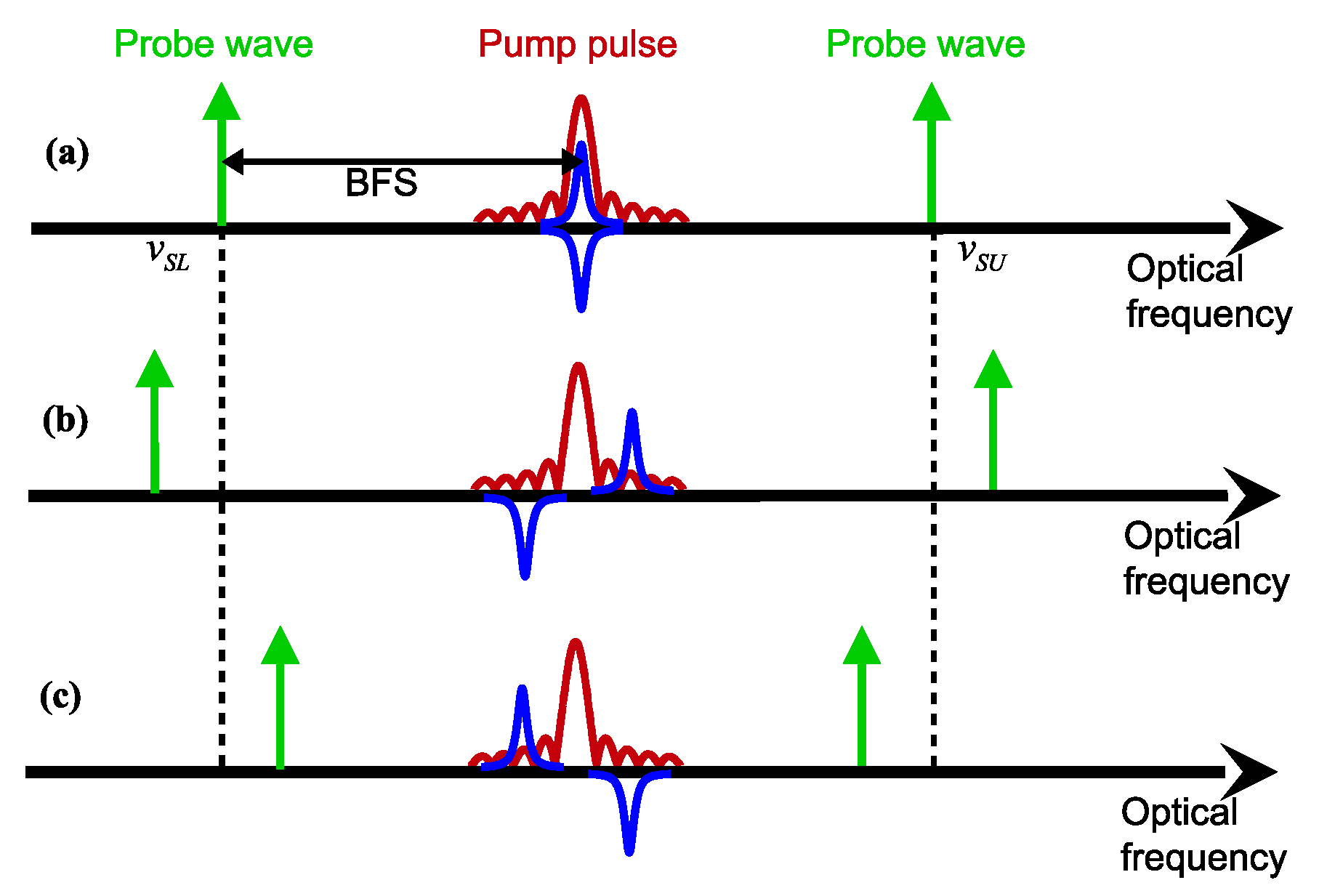

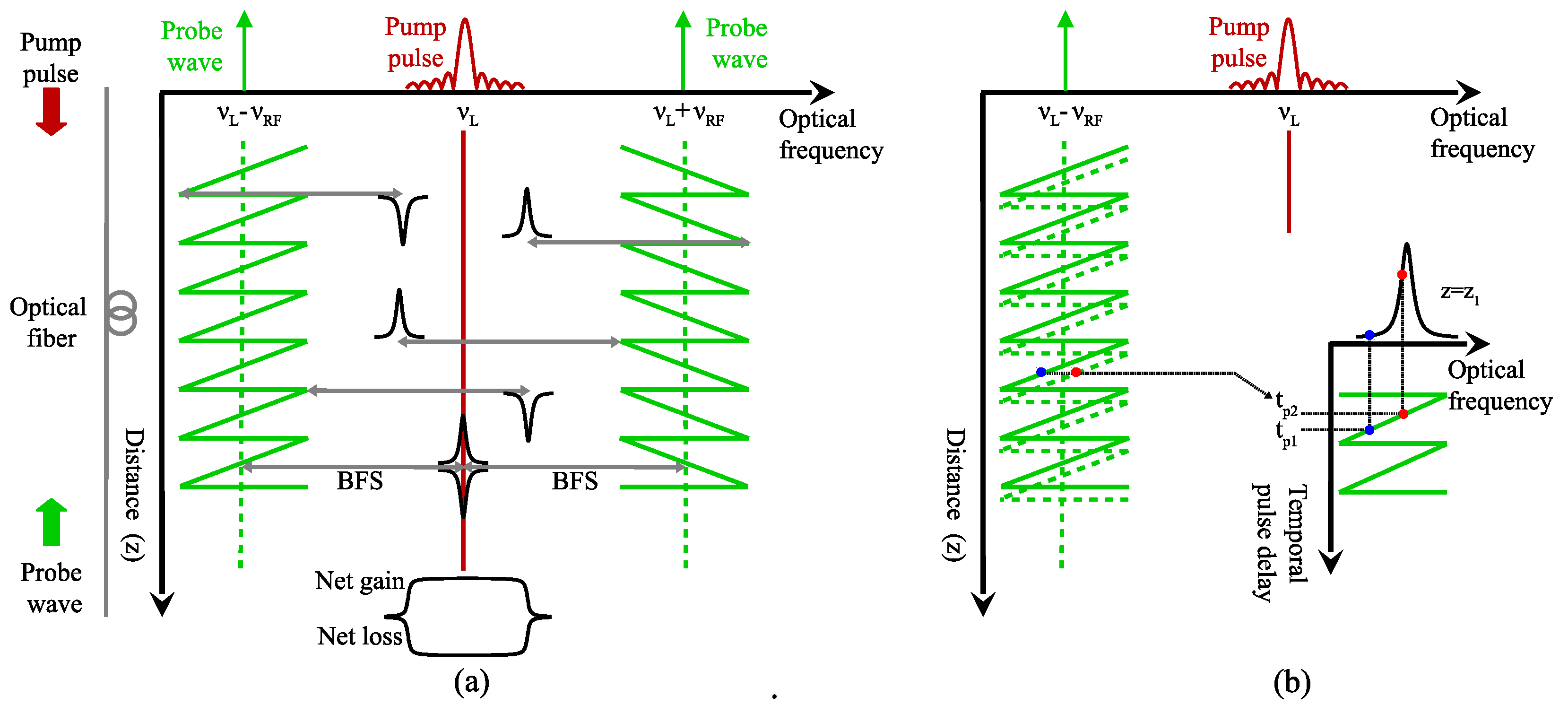

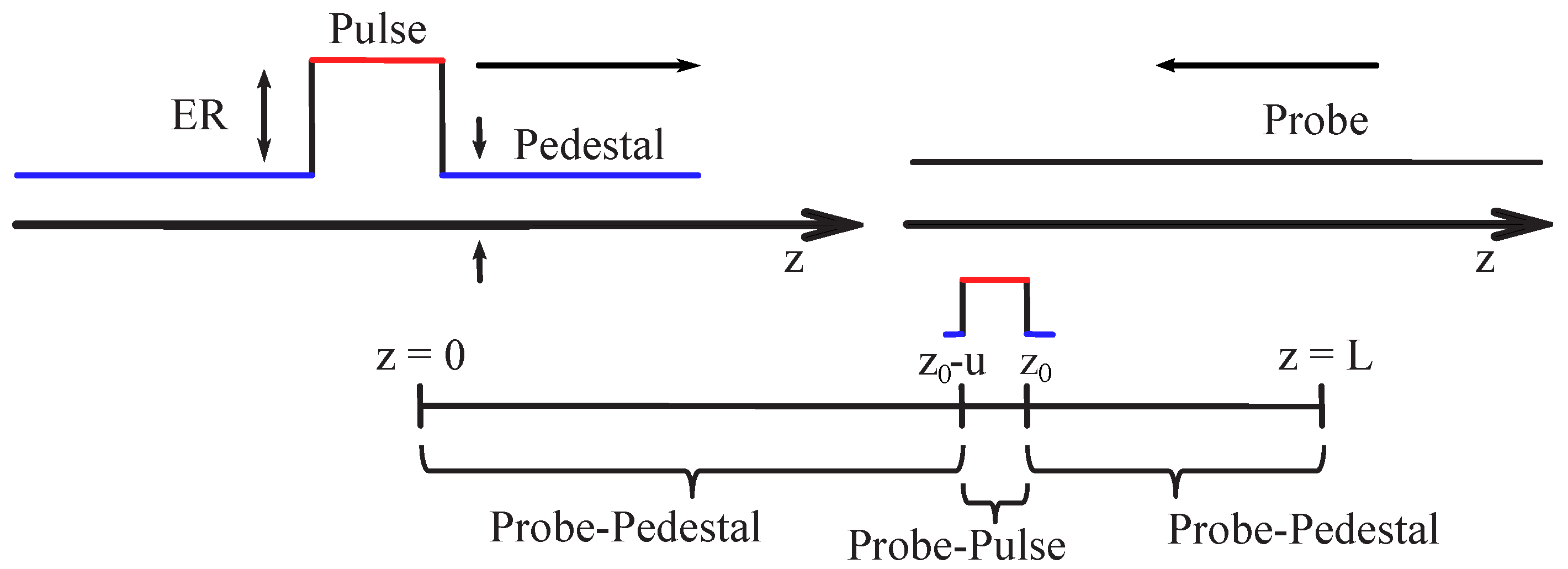
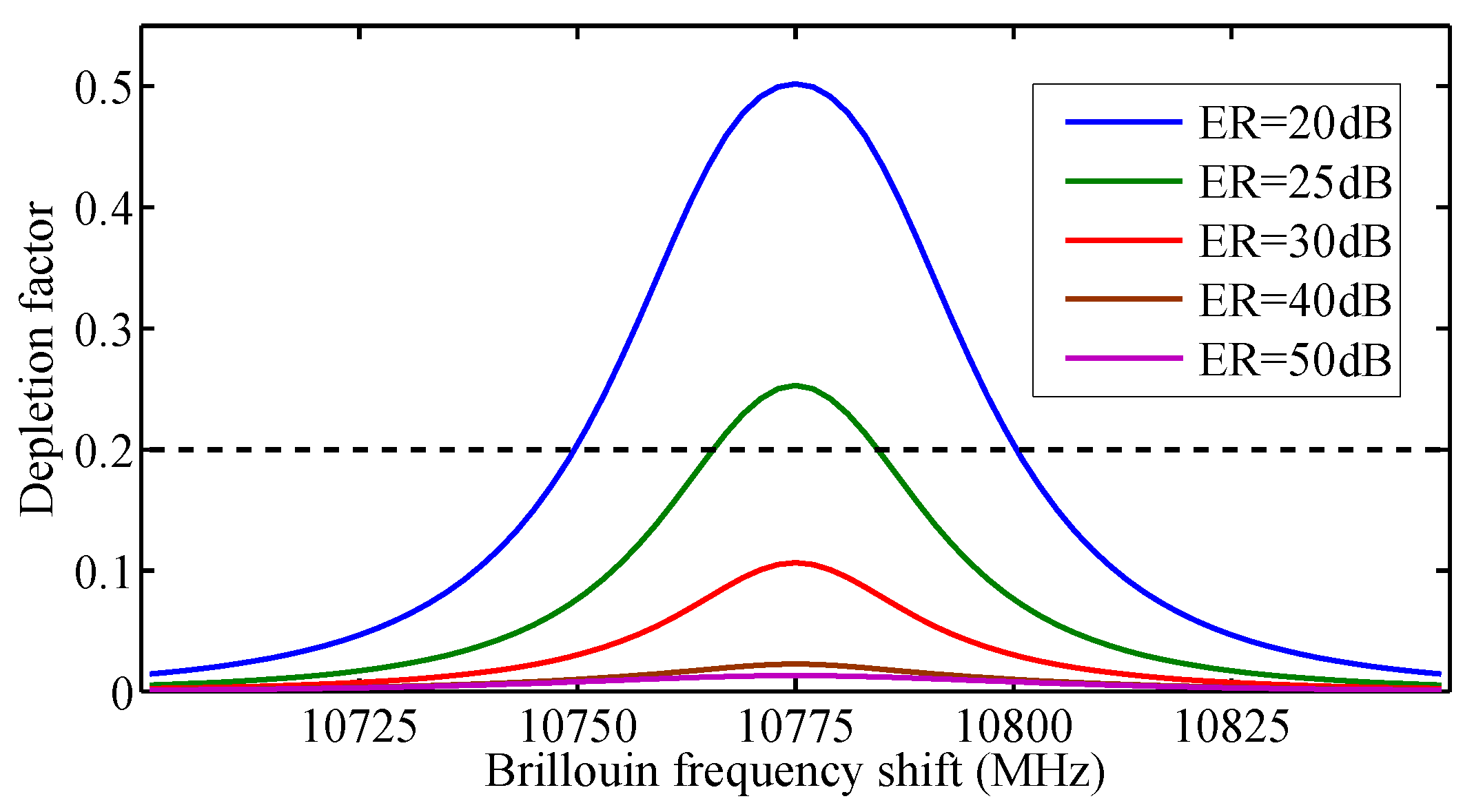
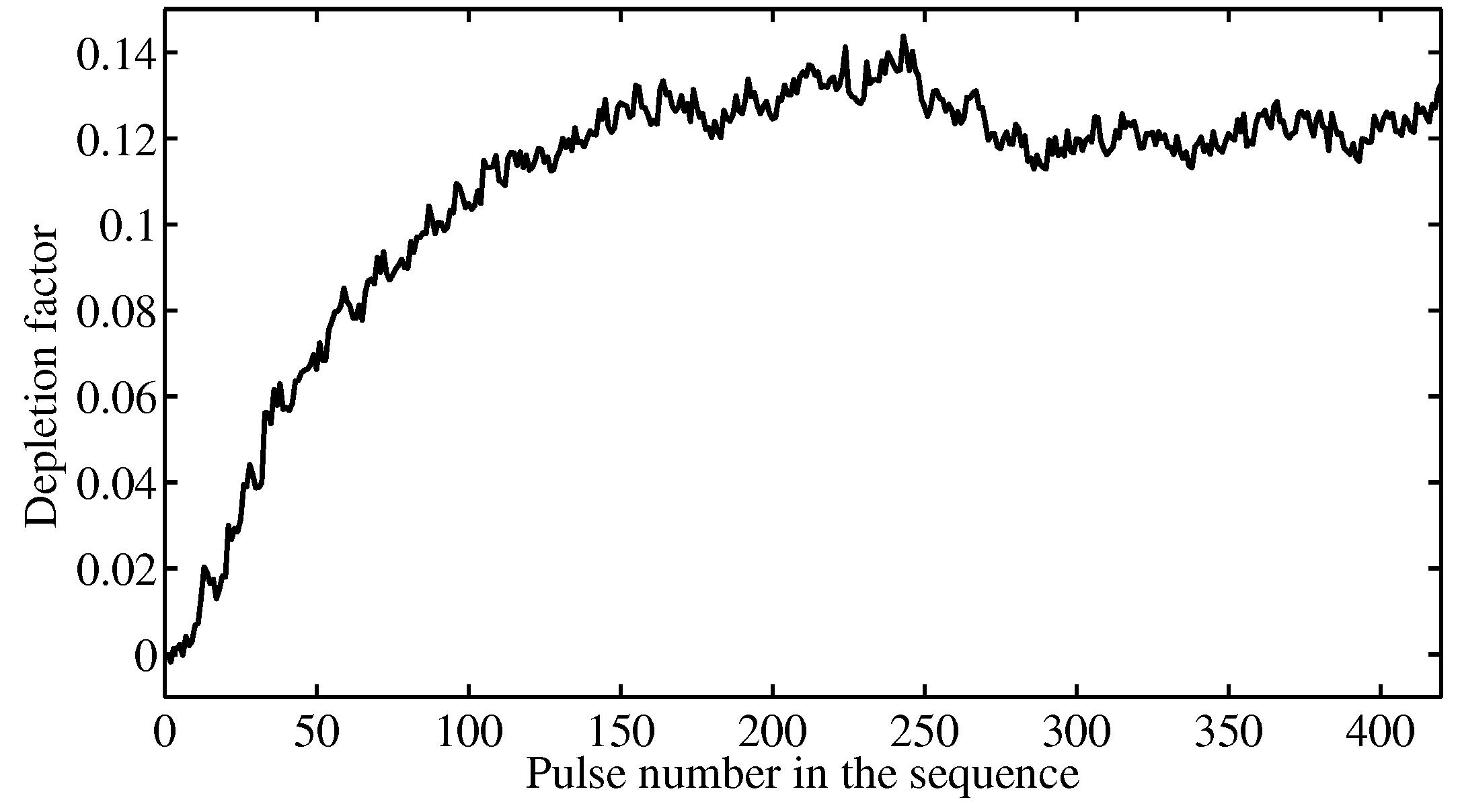
© 2017 by the authors. Licensee MDPI, Basel, Switzerland. This article is an open access article distributed under the terms and conditions of the Creative Commons Attribution (CC BY) license (http://creativecommons.org/licenses/by/4.0/).
Share and Cite
Iribas, H.; Urricelqui, J.; Mompó, J.J.; Mariñelarena, J.; Loayssa, A. Non-Local Effects in Brillouin Optical Time-Domain Analysis Sensors. Appl. Sci. 2017, 7, 761. https://doi.org/10.3390/app7080761
Iribas H, Urricelqui J, Mompó JJ, Mariñelarena J, Loayssa A. Non-Local Effects in Brillouin Optical Time-Domain Analysis Sensors. Applied Sciences. 2017; 7(8):761. https://doi.org/10.3390/app7080761
Chicago/Turabian StyleIribas, Haritz, Javier Urricelqui, Juan José Mompó, Jon Mariñelarena, and Alayn Loayssa. 2017. "Non-Local Effects in Brillouin Optical Time-Domain Analysis Sensors" Applied Sciences 7, no. 8: 761. https://doi.org/10.3390/app7080761





